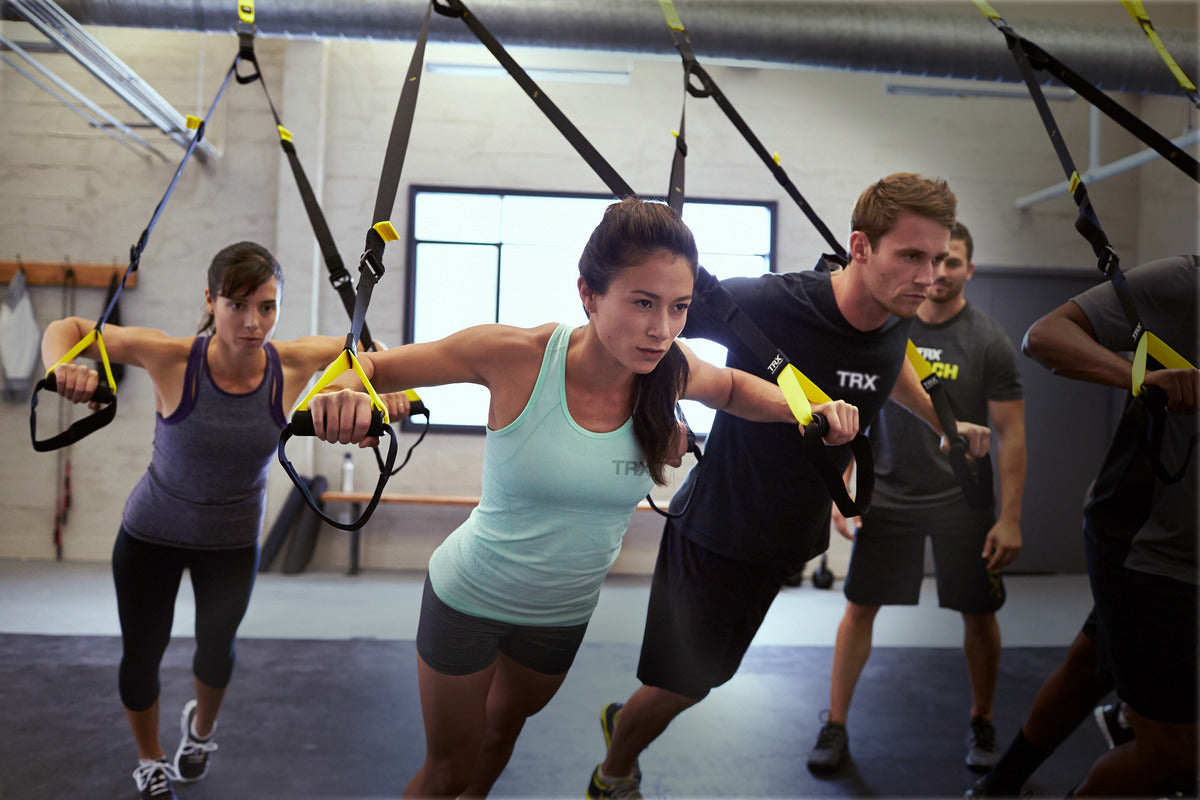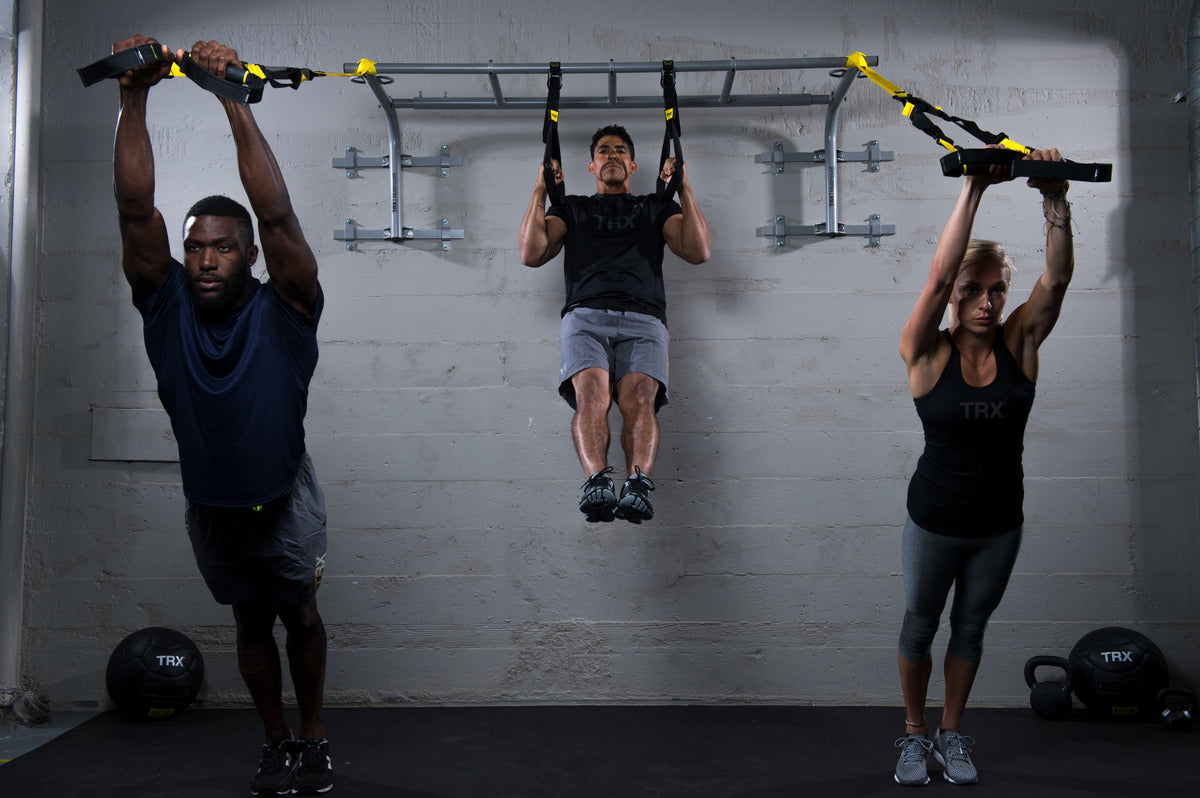As we’ve often shared before, strength training is a great complement to cardio exercise. Whether you love to row, bike, or run marathons, weight training and strength exercises can help you to improve your core strength and stability, increase your running economy, and help prevent muscle pain or injury.
This article will break down strength training for endurance runners and offer three sample exercises runners can try in their home gyms.
Should Endurance Runners Be Strength Training?
Incorporating functional fitness, mobility exercises, and compound movements into your strength training routine can bring immense benefits to athletes of all fitness levels. The convenience of performing most strength training exercises within the confines of your home gym with free weights and minimal space requirements further adds to its appeal.
Numerous studies have demonstrated the positive impact of strength training on endurance runners. By engaging in strength training, runners can optimize their energy utilization and oxygen consumption during running. Additionally, bolstering upper body strength contributes to enhanced running economy, improved neuromuscular coordination, and increased overall power.
In essence, strength training refines your running stride, enabling you to cover greater distances with greater speed while conserving energy. Furthermore, it fortifies your muscles and connective tissues, cultivating a comprehensive athletic prowess.
3 Strength Exercises for Endurance Runners
These strength exercises for runners will target your legs, arms, and core. Arm strength also improves your arm drive, adding more power to your stride. A stronger core promotes a stable upper body, allowing you to keep your form throughout your 10K or marathon. As with running, remember to warm up before starting your strength training.
1. Single-Leg Deadlifts
Similar to a glute bridge, a single-leg deadlift will help you recruit proper gluteal musculature along with your hamstrings. This movement will also improve core and hip stability for runners while training a long spine.
Depending on your upper body strength, you can start with a 15 to 25 lb weight (S, M, and L YBell Neo).
How To Do a Single-Leg Deadlift:
- Stand tall with your feet hip-width apart. You can use a loose grip to hold a YBell in your right hand or a double grip if you’d prefer to carry it with both hands.
- Keep a soft bend in your left knee. Slowly shift your body weight to your left leg and hinge forward at your hips, extending your right leg behind you while lowering the YBell toward your left foot.
- Lift your extended right leg and pitch your body forward until your body forms a “T” shape. Your arms should be hanging straight down. Hold this position for 2 to 3 seconds.
- Contract from both your glute and hamstring to pull yourself upright and lower your extended right leg. As you lower, stop before your back or hips come out of alignment. This is one rep.
- Repeat for 8 to 12 reps on each side.
Be Mindful of These Corrections:
Keep the proper form in mind: You need to keep a long spine by avoiding folding/bending at your abdominals. You should be forming a line from your head to your foot throughout the hinging movement. This long line also ensures that you’re keeping your hips forward and stable.
Pro Tip:
This movement is challenging for balance and stability. It’s easy for your body to focus more on balance than using the proper muscle firing patterns. For that reason, I recommend lightly holding on to a wall to help improve your hip alignment. Once you’ve mastered the move, you can try without holding onto anything, then increase the weight or change the tempo as you progress.
2. Half-Kneeling Shoulder Presses
Runners need to have strong legs, hips, and core strength. However, strengthening the upper body has just as much importance for overall improvement in athleticism. In the half-kneeling shoulder press, the positioning is excellent for lengthening the hip flexors and using the glutes and core to help stabilize, all while strengthening the shoulders.
I recommend a 15 to 25 lb weight (S, M, and L YBell Neo), depending on your upper body strength. As you adjust to the weight, you can progress to some of the YBell Pro Series.
How To Do a Half-Kneeling Shoulder Press
- With your right knee on the ground and your left foot planted with a 90-degree angle in the knee, hold the YBell in your right hand using the loose grip.
- In this half-kneeling position, tuck in your hips by squeezing your right glute. This squeeze will give you a stretch in the hip flexor along with adding stability in this position.
- Raise the YBell to rest just above your shoulder, with your right elbow pointed at a 45-degree angle from your body. This is your starting position.
- Starting with the YBell at your shoulder, lock in your core and look straight ahead as you press up with your right arm, and finish with the YBell in-line with the ear at the top.
- Slowly lower your arm back down to your starting position. This is one rep.
- Repeat for 8 to 12 reps on each side.
Be Mindful of These Corrections:
There should be no lower body movement, and you need to keep a straight spine as you press up with the YBell. Keep the kneeling side glute squeezed the entire time. Using an exercise mat may also help add comfort to your knees.
Pro Tip:
As you get stronger with this exercise, you can either progress by increasing the weight, changing the tempo, or pressing with both sides at the same time while staying in this ½ kneeling position for an extra challenge. As with all exercises, focus on the quality of your movement and form before increasing your reps or weight.
3. Bent-Over Rows
Strengthening your posterior chain (your entire backside) is greatly important for running and nearly everything in life. With bent-over rows, we’ll specifically be working on strengthening the muscles between your shoulder blades, which can also help improve posture. Adding this movement to your training will help to balance your upper body muscles.
I recommend starting with a 10 to 25 lb weight (XS, S, M, L, and XL YBell Neo), depending on your upper body strength. As you adjust to the weight, you can progress to some of the YBell Pro Series.
How To Do a Bent-Over Row:
- Hold one YBells in each hand, using the loose grip.
- Hinge at your hips with a slight bend in your knees like you’re performing a deadlift. Keep a straight spine — pretend you have a broomstick duct-taped to your back, and your spine cannot curve at all.
- In this position, the YBells will be starting from a vertical hanging position.
- Without moving your head, chest, or trunk of your body, row the YBells to your hips, pinching your shoulder blades back. Avoid rotating your body.
- Squeeze and hold that row position for 2 seconds at the top, and slowly lower back to the starting position. This is one rep.
- Repeat for 8 to 12 reps.
Be Mindful of These Corrections:
If you’re performing this movement with only one YBell, you can do this either with a single arm or with both hands on the YBell in an under grip. If you’re doing the movement with a single arm, have the non-weighted side remain hanging down.
Pro Tip:
If you have a hard time keeping your body from rotating, try placing your head on the end of an inclined bench to pin it down. Having your head on the bench can be a significant challenge, even if you don’t have difficulty isolating this position. You can also perform bent-over rows face-down on a 45-degree bench, flat bench, or an inverted row with a barbell rack for different variations.
For each exercise above, you can always increase the difficulty by increasing your reps, tempo, or weight. As with all strength training, you want to slowly increase your resistance (the weight size) to help prevent muscle or tissue injury.



